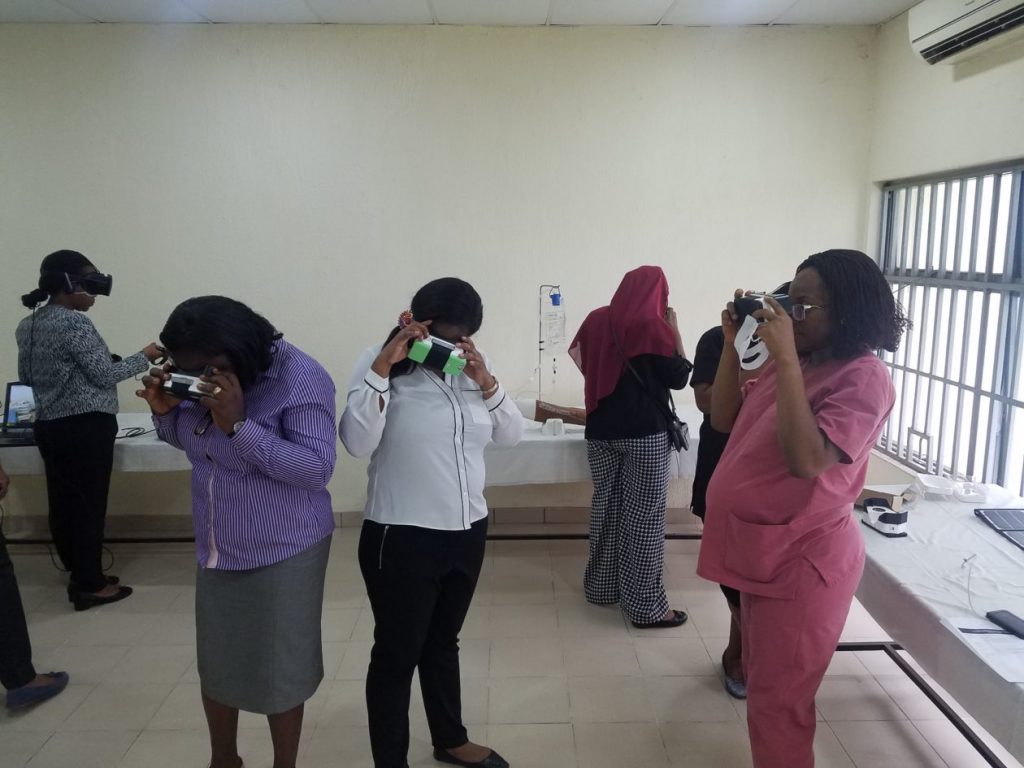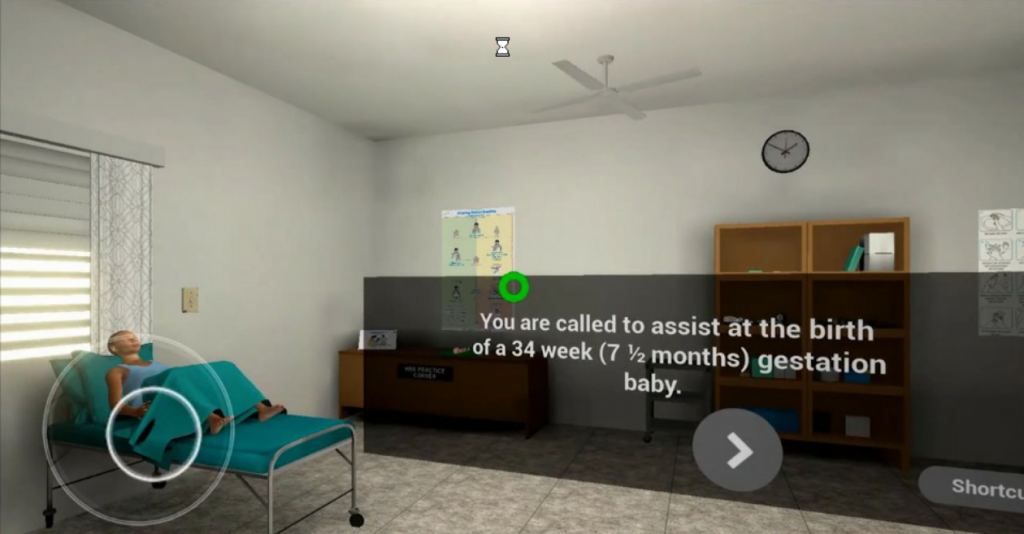
Pediatricians and nurses using virtual reality at the College of Medicine at the University of Lagos Simulation Skills Center. (Seattle Children’s Photo)
Helping Babies Breathe
Every second counts when a baby is born and doesn’t breathe or cry. The lack of oxygen can result in death or brain damage.
A neonatologist at Seattle Children’s, Dr. Rachel Umoren, is part of a project from Seattle Children’s and Oxford that is creating a virtual reality training program to educate more health workers on rapid-response techniques at low cost. The effort is part of Oxford’s LIFE project, a platform for VR-based healthcare training.
In an article from geekwire.com written by James Thorne:
“It’s a staggering problem,” said Umoren, noting that each year 280,000 babies die of birth asphyxia in sub-Saharan Africa. Globally, the condition is responsible for 23 percent of all newborn deaths, according to the World Health Organization.
Using virtual reality to train medical various professionals, has led the medical field to develop HBB, Helping Babies Breathe. This teaching tool shows that with training techniques they developed, it’s possible to reduce infant death by an amazing 47%.

The virtual reality simulation trains healthcare workers on rapid-response techniques when a newborn isn’t breathing. (Seattle Children’s Screenshot)
Employers are increasingly embracing VR as a way to train everyone from pilots to surgeons. Even Walmart used the technology to prep its workers for Black Friday.
In the Seattle hospital’s training program, it’s clear that the speed is vital to a successful result. You can’t be flipping through manuals when there is a non-breathing baby in front of you. It’s all about developing muscle memory.
Trainees are given three scenarios to decide what the next step should be. Normal Birth, Some Help Needed and Baby Not Breathing are the three situations that trainees must deal with.
You don’t know what you’re gonna get,” said Umoren.
Read more at geekwire.com







Leave A Comment